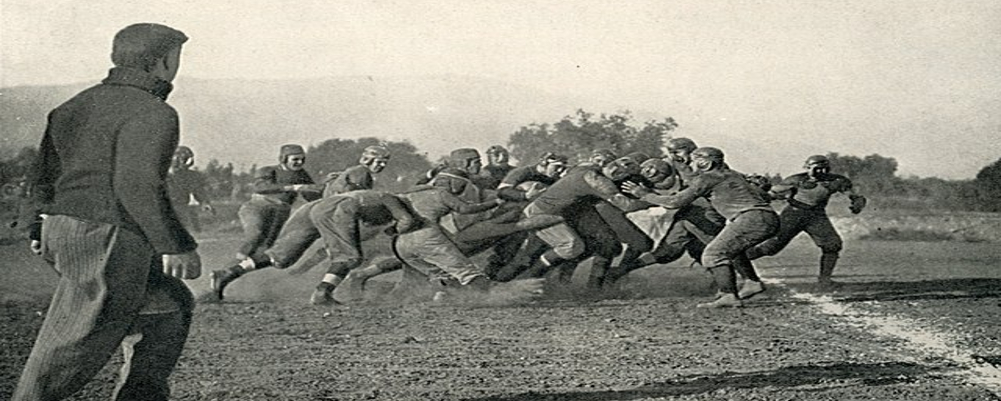Paul Robeson's prowess on the Rutgers gridiron from 1915 to 1918 saw him earn All-American honors twice (#B4 jersey), showcasing exceptional skill as an end. His dominance contributed to Rutgers' strong record under Coach Sanford, highlighted by key plays and defensive interceptions. This collegiate stardom paved his road to the early professional game.
Transitioning from Rutgers, Robeson played end in the American Professional Football Association (APFA) for the Akron Pros (1921) and later in the early NFL for the Milwaukee Badgers (1922, #21 and #17 jerseys). Even while pursuing law studies, his athletic talent broke barriers in the fledgling league, marking him as a significant figure in the game's integration and early history.
April 9, 1898, in Princeton, New Jersey, marked the arrival of Paul Robeson, a phenomenal athlete and influential figure whose impact extended far beyond the football field. His time as an end for Rutgers University from 1915 to 1918 showcased his exceptional talent under the guidance of legendary coach G. Foster Sanford.
College Career:
At Rutgers, Robeson was a dominant force, contributing significantly to the team's impressive 22-6-3 record during his four seasons. The provided details highlight his remarkable athleticism and versatility. In 1915 against Rensselaer, he demonstrated his awareness by recovering a fumble to set up a crucial score. His offensive prowess shone in 1917 against Fort Wadsworth with touchdown receptions of 40 and 37 yards. The same year against Syracuse, he made key catches and intercepted a pass on defense, illustrating his two-way impact. His standout performance against the undefeated Newport Naval Reserve in 1917, where he caught a touchdown pass and excelled defensively in a 14-0 victory, solidified his reputation as a player who rose to the occasion against top competition. He earned 15 varsity letters across four sports: football, baseball, basketball, and track, showcasing his all-around athletic brilliance.
Road to the Pro Game:
Following his stellar collegiate career, Robeson transitioned to the nascent professional football scene while simultaneously pursuing his law degree at Columbia University. He played for the Akron Pros in the American Professional Football Association (APFA) in 1921, participating in eight games at both tackle and end, even playing alongside the legendary Fritz Pollard. In 1922, he joined the Milwaukee Badgers, a founding team of the newly established National Football League (NFL), playing as an end. Reports indicate he earned a significant $500 per game, using his football earnings to fund his legal studies. His professional football career, though relatively brief, occurred during the formative years of the NFL.
Football Legacy:
Paul Robeson's football legacy is significant, not only for his outstanding athletic achievements but also for breaking racial barriers in the sport. He was a two-time All-American end, recognized by Frank Menke in 1917 and 1918, and by Walter Camp in 1918, who reportedly considered him the greatest end ever to play. He was the first African American to earn All-American honors twice in college football and was the first Black player on the Rutgers team. Despite facing racism, he excelled and earned the respect of many. His success on the gridiron, coupled with his later achievements as a world-renowned actor, singer, and civil rights activist, cemented his status as a true Renaissance man.
Accolades, Awards and Career Stats:
✦ Two-time All-American: 1917 (Menke), 1918 (Menke, Camp)
✦ Rutgers Football Record: 22-6-3 during his four seasons.
✦ Versatile Athlete: Earned 15 varsity letters in football (4), basketball (3), baseball (3), and track (2).
✦ Professional Football Player: Akron Pros (APFA), Milwaukee Badgers (NFL).
✦ College Football Hall of Fame Inductee: 1995.
✦ Rutgers University Valedictorian: Class of 1919.
✦ Phi Beta Kappa inductee.
✦ Rutgers Sports Hall of Fame Inductee: 1988.
Paul Robeson's impact on football is undeniable, paving the way for future generations of African American athletes while establishing himself as one of the greatest players of his era. His induction into the College Football Hall of Fame in 1995 posthumously recognized his exceptional contributions to the sport.



